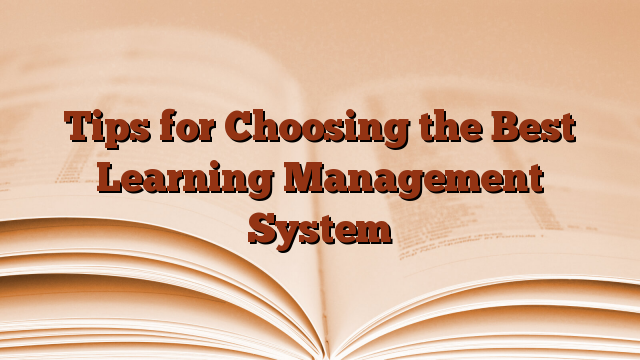When the Learning Management System (LMS) was first created, its primary role was administration. Most business organizations required a system to deliver training that enables and continuously tracks learning. The e-learning services used to develop the LMS were also underdeveloped – all they could do was create a delivery and recording platform. But modern LMS have evolved and can do much more. They not only deliver learning, but also manage the organization’s entire training process – including assigning e-courses, managing classroom training or blended learning, producing useful and regular reports, as well as assessing learners to set their future learning paths. Therefore, when choosing a learning management system, you need to keep two crucial points in mind – the LMS should deliver maximum ROI and enable effective learning.
- The LMS should be easy to navigate and learners should be able to find relevant learning material quickly and efficiently. If the learners first have to familiarize themselves with the structure and navigation of the LMS, then this is a major obstacle to learning overall. Make sure the LMS has features that support your learning goals and that learners are able to take full advantage of them all. Additional functionalities make navigating a learning management system difficult and the complexity scares most learners.
- The choice of e-learning services and software should be such that the learning management system is able to be compatible and integrated with existing systems. This also encourages learners to use the new system more and more. It reduces learner resistance to a great extent. Most LMSs can be integrated with HRMS and other software the organization is already using to efficiently track learners and align their learning with other activities in the organization.
- The LMS should also provide “on-demand” learning to learners in an organization. Learning management system catalogs should be made searchable so that learners can easily find relevant courses and other training materials when they need them. L&D managers can create aggregated reports on learners’ comments and suggestions and further customize the content to their needs. The LMS should have rapid authoring tools that enable rapid content generation on a continuous basis. With numerous sample templates and easy integration of media elements – such as audiovisuals, animations, etc. – these tools can help L&D managers create content according to the changing needs of learners.
- The learning management system should also be mobile compatible to meet the needs of the modern learner who spends a lot of time on mobile devices. This increases learner accessibility and also aligns the LMS with the learner’s just-in-time needs. And with mobile access to the LMS, learners access content not just when they need to, but when they need to.
- The LMS should also provide a wide range and variety of e-content available – with a liberal mix of text, graphics, animations and audiovisual elements. E-courses shouldn’t be long and text-heavy. They should be divided into modules that can be consumed according to the needs of the learner. Learners should be able to exit mid-course and start from that point the next time they access the LMS.
By following these tips, you can invest in one LMS that ensures effective learning and learner satisfaction. The true benefit of the training will thus permeate the entire organization.
Thanks to Gireesh K. Sharma

Leave a Reply